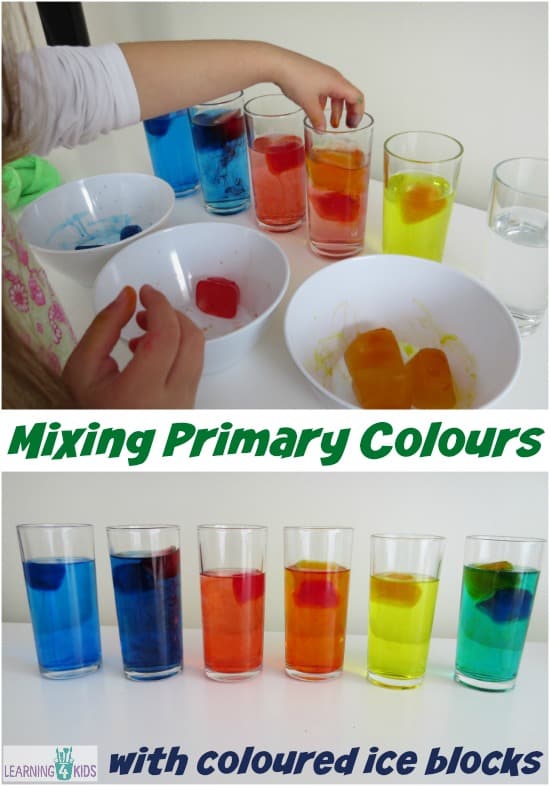
Exploring Mixing Primary Colours Activity – Colours are everywhere and it is a wonderful experience for children to see how colours mix and form other colours. Mixing Primary Colours with coloured ice blocks is an opportunity for exploring colour mixing and watching how different colours blend to form other colours.
The three primary colours, red, blue and yellow are the minimum number of colours that can be mixed to make the greatest number of other colours or secondary colours.
What you will need?
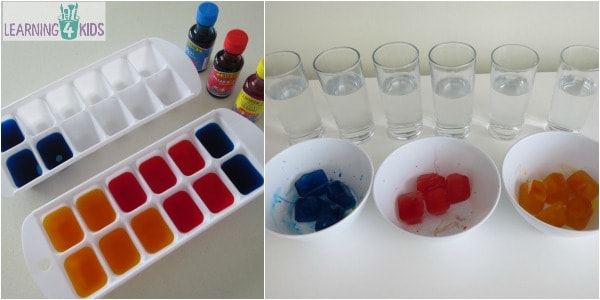
You will need ice cube trays, red, blue and yellow food colouring, warm water, 3 bowls and 7 glasses or other clear containers such as jars. We made five ice cubes of each colour and diluted the food colouring with water.
Please Note: We used warm water for our activity as it speeds up the melting process of the ice blocks. You may like to slow down the melting process by adding cold water instead.
Let’s Play
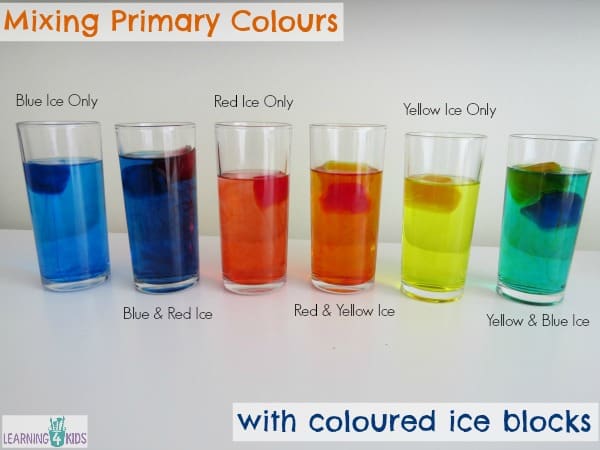
The purpose of this activity is to demonstrate to children how the primary colours: red, blue and yellow mix and form the secondary colours: green, orange, and purple.
Some Ideas:
- Place one blue ice cube in jars 1 and 2.
- Place one red ice cube in jars 3 and 4.
- Place one yellow ice cube in jars 5 and 6.
- Add one red ice cube to jar 2.
- Add one yellow ice cube to jar 4.
- Add one blue ice cube to jar 6.
- Watch as the colours melt and blend together. Make predictions and talk about what is happening throughout the process. Use descriptive language.
- Label and name each colour throughout and talk about the new colours that they see.
- Ask questions, such as, which two colours made green? Name other objects that are green? Can you go and find me something that is green?
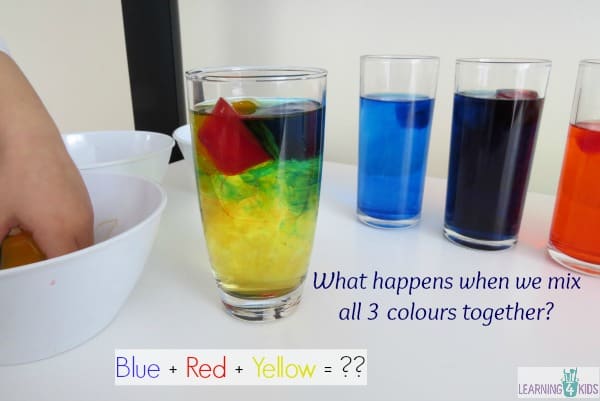
What happens when you add a blue, red and yellow ice block together? What colour does it make?
This is a great extension of this Mixing Primary Colours activity and explores some scientific skills. It provides an opportunity for children to exercise scientific thinking: make predictions, observations, comparison, reasoning, experimentation and evaluation.
Let’s Learn
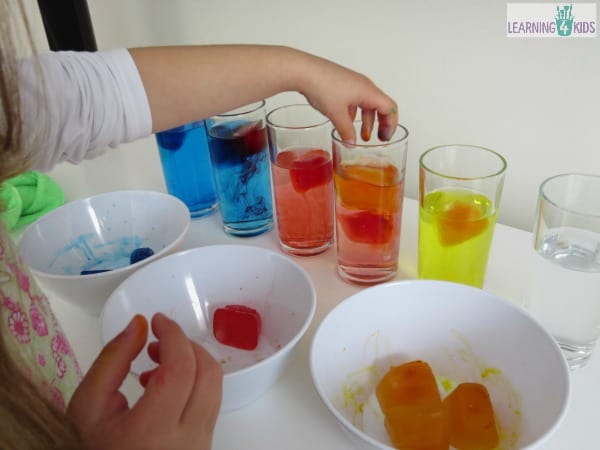
Learning Opportunities
- Language development: Using descriptive words to express ideas and opinions.
- Make connections with real life experiences.
- Promote scientific thinking: predictions, observations, comparison, reasoning, data gathering, experimentation and evaluation
- Hand-Eye Coordination and Control
- Cause and Effect
- Concentration
- Language development – colour mixing, primary and secondary colours.
- Colour recognition – name and recognise colours.
Click here for more COLOUR activities & play ideas
Click here for more SCIENCE activities & play ideas
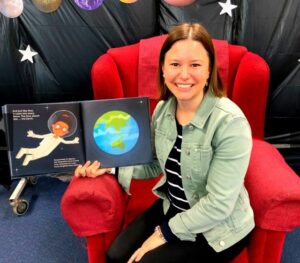
It is great work and would love to share ideas. Thank you.
What a fun idea! Love this!
We are looking forward to trying this fun activity as a part of our March “colors” theme. Thank you for sharing!